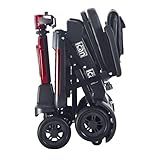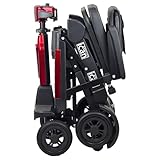Creating a home that’s safe and accessible is essential for individuals with disabilities or those facing mobility challenges. Everyday layouts and design choices can often become obstacles, making simple tasks feel overwhelming. By implementing thoughtful modifications, homes can be transformed into spaces that promote independence and ease of movement.
From installing entryway ramps to adapting bathrooms with grab bars and raised-height toilets, these changes not only enhance safety but also improve quality of life. Whether it’s widening doorways for wheelchair access or choosing nonslip flooring for added stability, these adjustments cater to diverse needs while reducing risks. Accessible designs ensure everyone can navigate their home with confidence and comfort.
Top Home Accessibility Modifications
Key Takeaways
- Home accessibility modifications improve safety, independence, and quality of life for individuals with disabilities or mobility challenges.
- Key adjustments include ramps, widened doorways, stairlifts, and non-slip flooring to enhance movement and stability throughout the home.
- Bathroom and kitchen adaptations, such as grab bars, roll-in showers, and adjustable countertops, make essential spaces more functional and safe.
- Affordable solutions, like smart home tools and furniture rearrangements, can significantly boost accessibility without high costs.
- Financial assistance options, including grants and support programmes, help offset the expenses of accessibility upgrades for eligible individuals.
Why Home Accessibility Modifications Matter
Home accessibility modifications enhance safety, convenience, and independence for individuals with disabilities or mobility challenges. They help reduce risks by adapting spaces to accommodate physical limitations, creating an environment that is more navigable and less hazardous.
Such modifications, including widened doorways or ramp installations, can transform daily living by ensuring functionality across all home areas. Beyond physical changes, these adjustments promote dignity and independence, allowing individuals to maintain or regain control over their surroundings. Incorporating the best home accessibility modifications further ensures the home caters to a wide range of needs, supporting a more inclusive living space.
Accessible homes not only improve the quality of life for residents but also provide peace of mind for caregivers and family members, knowing their loved ones are in a secure environment.
Key Home Modifications For Accessibility
Strategic home accessibility modifications enhance independence and ensure safety for individuals with disabilities or mobility challenges. These adjustments adapt living spaces to fit diverse needs effectively.
Ramps And Entryway Adjustments
Replace steps with ramps to ease access for wheelchairs and walkers. Use a gentle 1:12 slope ratio and ensure thresholds are low or bevelled for seamless transitions. Open layouts improve movement, reducing barriers at entry points.
Stairlifts And Elevators
Stairlifts provide mobility between floors in homes with stairs. For greater accessibility, elevators offer a reliable solution, ensuring individuals can navigate multiple levels easily and safely. These adaptations enrich multilevel homes’ accessibility.
Widened Doorways And Hallways
Doorways widened to 32-36 inches accommodate wheelchairs comfortably. Enlarging hallways minimises confinement and enhances seamless movement. Optimal dimensions increase overall functionality in living spaces.
Bathroom Adaptations
Add grab bars and walk-in showers to ensure safety. Raised-height toilets and roll-in showers increase convenience for individuals with mobility challenges, providing easier access to essential bathroom fixtures.
Kitchen Modifications
Install pull-out storage and adjustable countertops for easier usage. Ensure safe access to appliances by lowering handles and switches to create a fully accessible food preparation area.
Flooring Solutions For Safety
Non-slip flooring materials, such as textured tiles or vinyl, prevent falls and enhance stability. Choose firm and durable options that support wheelchairs while reducing risks in every room.
Improved Lighting And Smart Home Integration
Brighten spaces with enhanced lighting, especially in areas like staircases and bathrooms. Smart integrated systems allow voice or motion control, helping individuals manage lighting and other home features effortlessly.
Grab Bars And Safety Rails
Position grab bars in high-risk areas like bathrooms and hallways. Safety rails prevent falls and support individuals with mobility challenges, adding crucial stability to everyday movements.
Bedroom And Living Area Enhancements
Lower wardrobes and adjustable furniture improve accessibility. Add clear floor space for wheelchair movement, ensuring these key areas of the home are usable and safe for all.
Affordable And Low-Cost Modification Ideas
Simple, cost-effective measures can significantly enhance the accessibility and safety of a home. These changes address essential needs without requiring extensive renovation, making them ideal options.
DIY Safety Features
Adding safety features like grab bars in strategic areas, such as beside beds or in bathrooms, boosts security. Anti-slip grips under rugs reduce fall risks on slippery surfaces. Adequate lighting, including motion-sensor lights, ensures clear visibility in areas like hallways.
Smart Home Tools For Accessibility
Smart technologies increase accessibility by allowing users to control lights, thermostats, and appliances with voice commands or touchscreens. Motion-detection lights and video doorbells enhance safety by improving visibility and offering secure communication.
Furniture Rearrangements For Mobility
Arranging furniture to provide at least 36-inch pathways promotes easier navigation for wheelchair or walker users. Removing obstacles and ensuring essential items, like utensils and books, are placed on lower shelves simplifies daily activities.
Financial Assistance For Home Modifications
Financial assistance options can help offset the cost of making homes safer and more accessible for individuals with disabilities or older adults. Several resources, including grants and budget planning, are available to support accessibility changes.
Available Grants And Support Programmes
Governments and community organisations often provide grants for accessibility improvements. These can cover modifications like ramps or doorway widening. State-level programmes, such as home and community-based services, are a common source of funding for those who qualify based on income or disability status.
Budgeting For Accessibility Improvements
Budget planning enables homeowners to prioritise critical accessibility changes while managing costs. Focusing on the most impactful improvements, like entryway adjustments or smart tools, ensures a balanced approach. Financial assistance can be combined with a well-structured budget to achieve the best home accessibility modifications.
Conclusion
Creating an accessible home is a meaningful step towards fostering independence, safety, and comfort for individuals with diverse needs. Thoughtful modifications not only improve daily living but also ensure a more inclusive and supportive environment for everyone.
By combining practical adjustments with available financial assistance, homeowners can implement changes that truly make a difference. An accessible home promotes peace of mind, dignity, and a better quality of life for all who live there.
Top Home Accessibility Modifications
Frequently Asked Questions
What are home accessibility modifications?
Home accessibility modifications are changes made to a home to improve safety, mobility, and independence for individuals with disabilities or mobility challenges. These adjustments can include adding grab bars, widening doorways, installing ramps, or making rooms easier to navigate.
Why are accessibility modifications important?
Accessibility modifications are essential for creating a safe, functional environment for individuals with physical limitations. They promote independence, reduce risks of accidents, and provide peace of mind for family members or caregivers.
How can I make my bathroom more accessible?
To improve bathroom accessibility, consider installing grab bars, using a walk-in shower, or adding a raised toilet seat. Non-slip flooring and handheld showerheads also enhance safety and usability.
Are accessibility changes expensive?
Modifications can range from affordable DIY solutions, like adding grab bars or anti-slip rugs, to extensive renovations, such as installing a stairlift. Government grants or assistance programmes may help offset costs.
What are some affordable accessibility improvements?
Low-cost adjustments include adding grab bars, rearranging furniture for clear pathways, using anti-slip mats, and integrating smart home tools like voice-activated lights.
Can government programmes help with accessibility costs?
Yes, various government and community programmes offer grants or financial aid for home modifications, such as ramps or widened doorways. Eligibility may depend on income or disability status.
How does smart technology improve home accessibility?
Smart home tools, like voice-controlled lighting and motion sensors, enhance convenience and safety by making daily tasks easier for individuals with limited mobility.
What rooms benefit most from accessibility modifications?
Bathrooms, kitchens, and entryways benefit greatly, as these are high-use areas that often pose mobility challenges. Bedrooms and living areas can also be adapted to ensure safety and comfort.
How do I start planning home modifications?
Begin by assessing specific needs, consulting an occupational therapist if necessary, and prioritising critical changes. Consider your budget and explore assistance programmes for funding support.
Where can I learn about accessibility standards?
For detailed guidelines, visit official resources like the UK Government website or consult organisations specialising in disability services for advice on accessibility standards and compliance.












